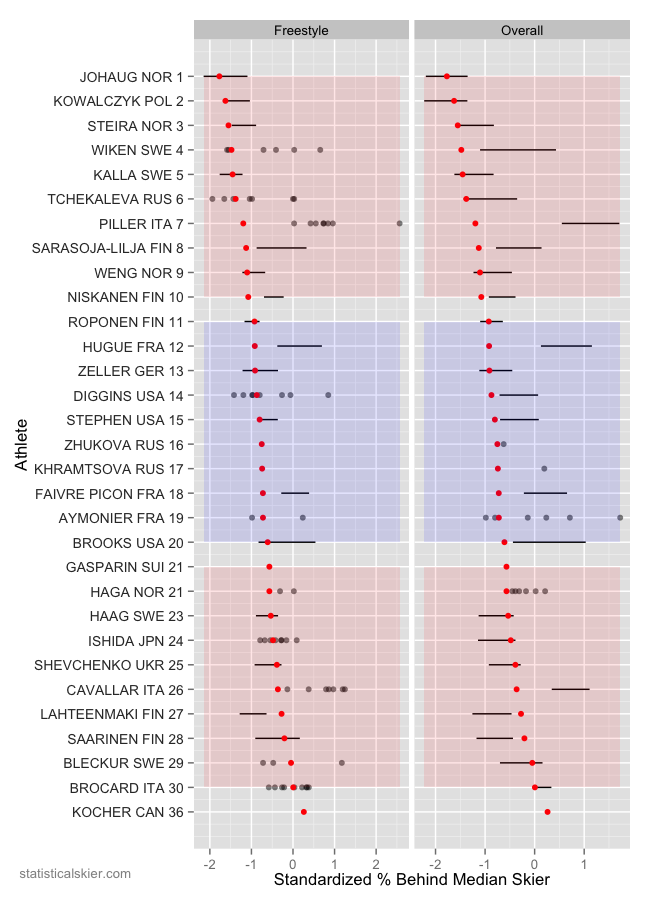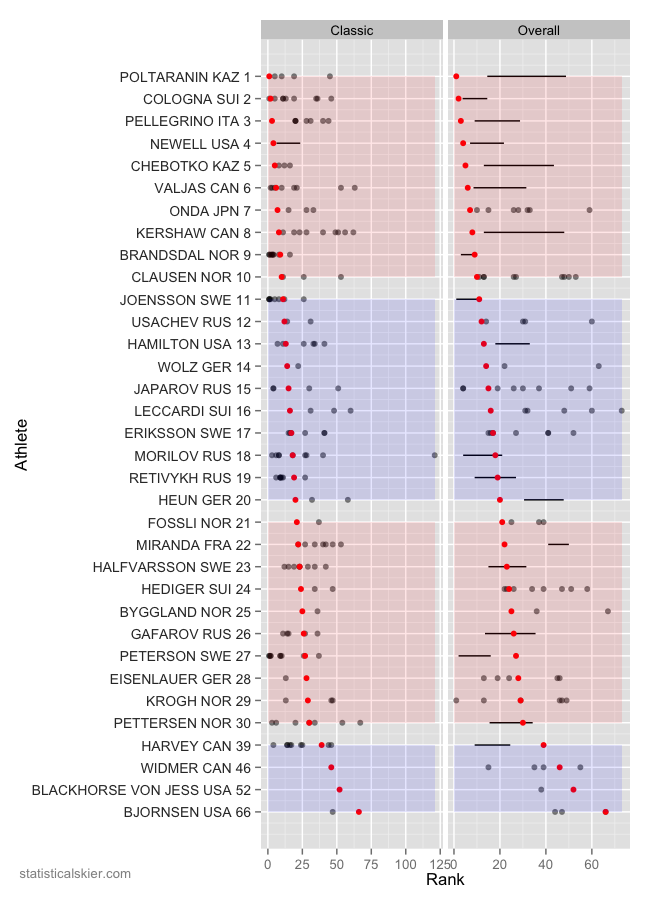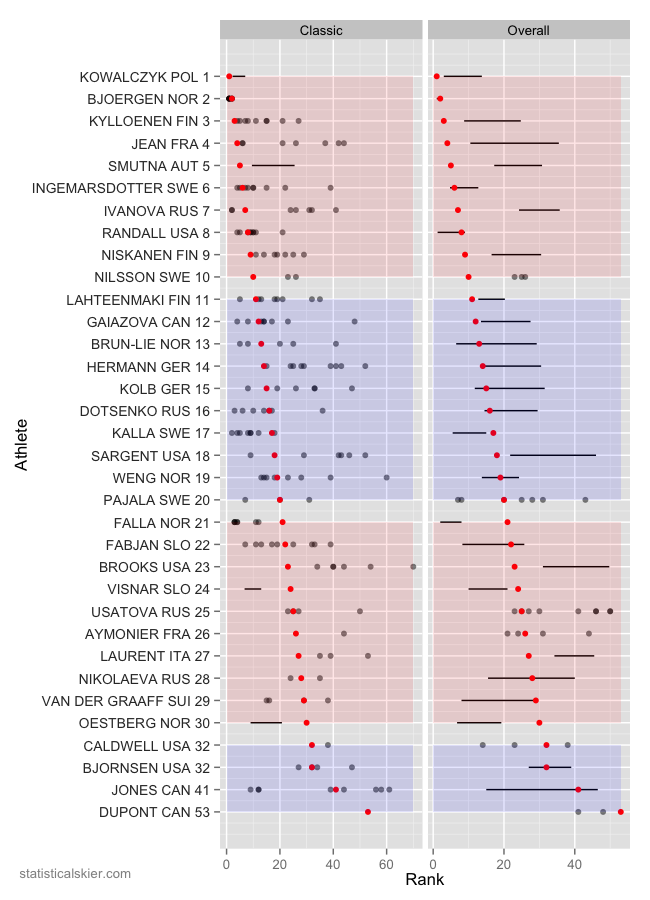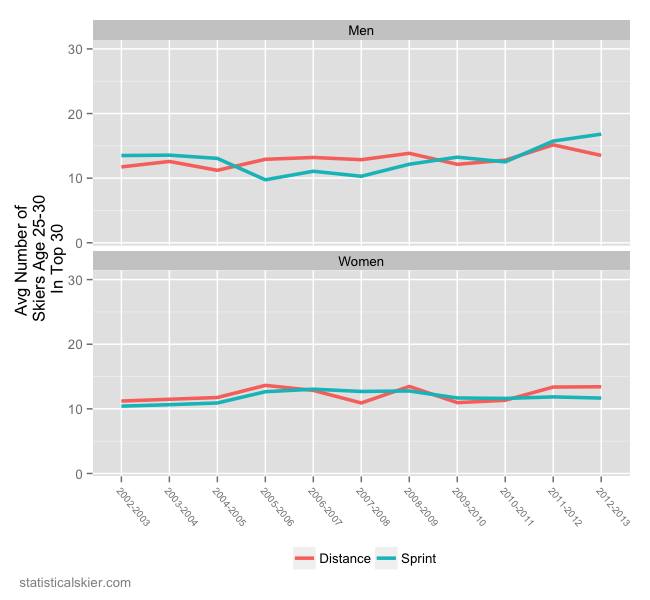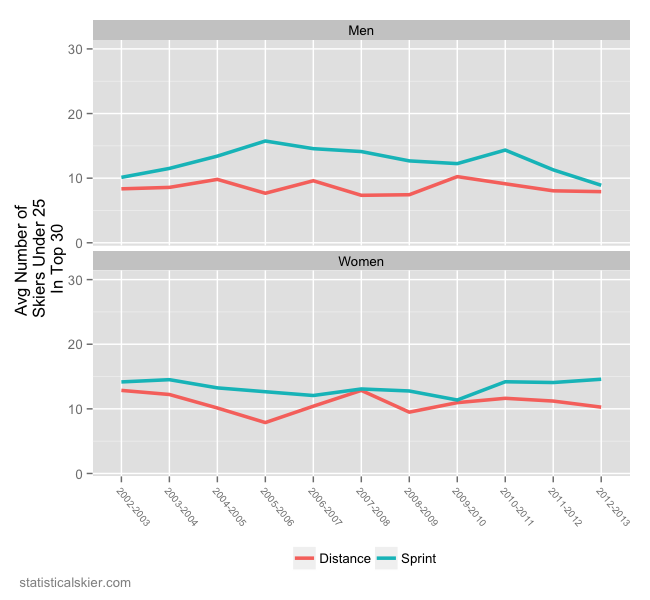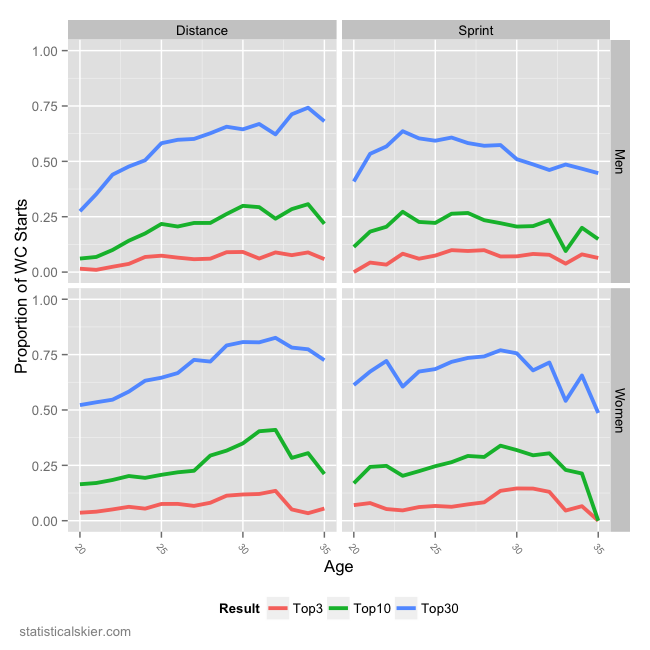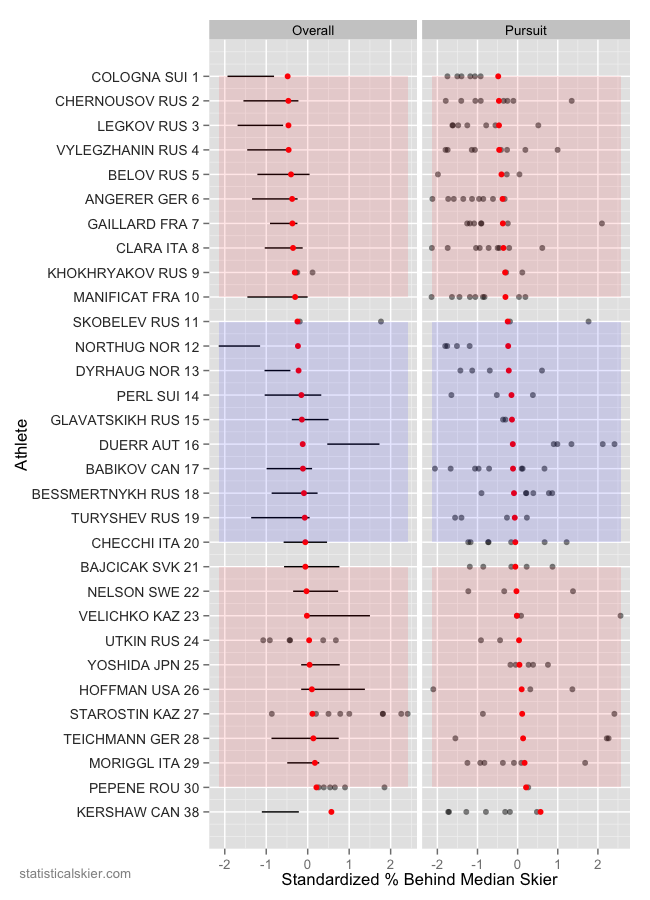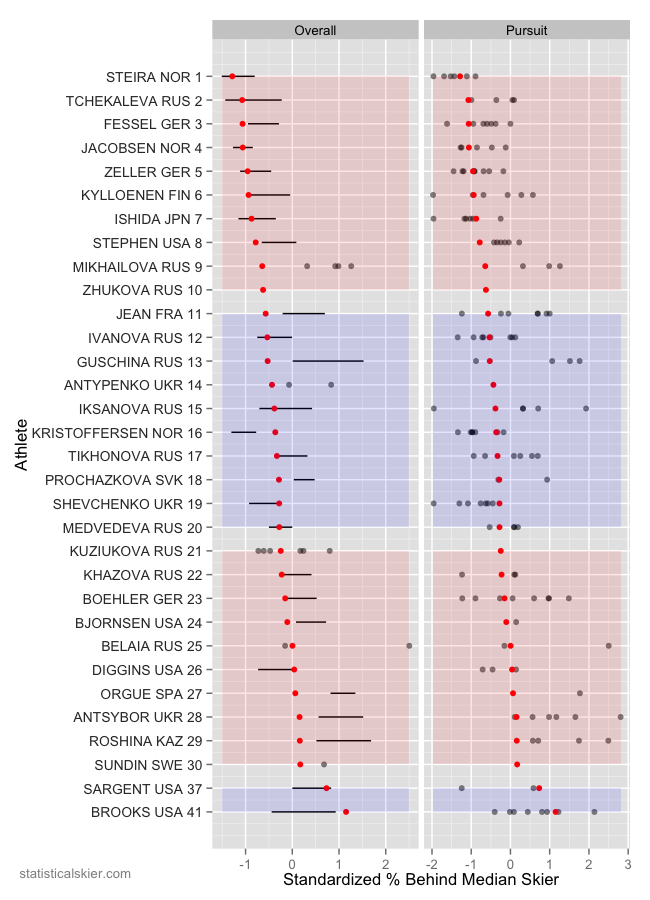Pages
- Race Snapshot: TdS Continuous Pursuit 4 views
- Dope Slap 3 views
- Running: What’s The Relationship Between Distance And Pace? 2 views
- WJC Preview 2 views
- Week In Review: Friday Feb 25th 2 views
- Race Snapshot: IBU WC Men/Women Sprint 2 views
- How’d We Do? USA/CAN Season Review 4 1 view
- Race Snapshot: TdS Final Climb 1 view
- USST Preview: Liz Stephen & Morgan Arritola 1 view
- Handicapping WSC 10/15km Freestyle 1 view
Tags
Age Analysis biathlon bump chart canada classic cycling Davos development devon kershaw Distance fis points freestyle giro d'italia kikkan randall kris freeman kuusamo liz stephen marit bjoergen mass start men most improved norway olympics pursuit race snapshot recap retirement retrospective season preview sochi Sprint stage race sweden tour de france tour de ski U23 USA usst wbc week in review WJC/U23 women World Cup WSC
Davos Seeding
I posted these a while back, but since the Davos races are just around the corner, I thought I’d put them up again so we can see just how wrong I am!
Basically, I came up with a way to try to develop a somewhat more sophisticated “seeding” that takes into account the specific event in question. I haven’t edited the list to remove people who are sick, injured or just skipping the Davos races. Anyone who’s done a decent number of WC races this season, plus at least one of this particular format are included, and I’m showing the top 30 seeds.
For the distance race:
[table id=83 /]
And the sprint:
[table id=84 /]
Tagged Davos, men, predictions, seeding, women, World CupPatience Is Not A Virtue
I’m going to do something stupid in this post. I’m going to disagree with someone who has likely forgotten more about the sport of XC skiing than I will ever know.
It’s World Championship team selection time, and in North America that pretty reliably means some drama from the peanut gallery, represented here by the commenters over at FasterSkier. Lots of people like to poke fun at the folks commenting there (which I have done myself, from time to time), but  occasionally people weigh in whose opinions I find interesting. Here is the comment that got me to complaining last week on Twitter:
[I]t’s interesting that it takes the Canadian Team selection to get into some very good and serious discussion about what the US has been doing in this regard for the past several years.
I do not sponsor or favor any particular athletes. I do not know many of them, or much about their capabilities, not having seen them ski or race a whole lot. All I do is study the WC results and the ages of the skiers–emphasis on “ages.†Then I tell some of the younger skiers I DO know that they should not be impatient, that they should not expect significant results on the WC circuit until they are older. You should ask why.
A simple study of WC results shows that the majority of the top 30 finishers are between the ages of 25 and 30. About as many are older than 30 as there are that are younger than 25, but these two groups make up only about 1/3 of the total. (Please note that the successful women mature a bit earlier and their ages–for success– are a bit younger than the men’s.)
I have seen virtually no examples where our skiers mature earlier than their counterparts from Europe, Scandinavia, Russia, and so on. (Exception: Bill Koch. Northug is a Norwegian example.) Therefore, it doesn’t make sense to me to expect our younger skiers to perform really well. It’s going to take time. Now what the coaches do to optimize the time needed to reach maturity is their job. It does seem many of the older skiers have been abandoned in the past years in favor of younger stalwarts. It’s also noteworthy that our older skiers–Randall, Newell, Freeman, Brooks and even Stephen (26?)–are getting the best US results.
This was posted by someone called caldxski, so we can’t be 100% sure of who it was, but it seems like a fair bet that it was someone living in Vermont who’s last name begins with “Cald”. Hence the first two sentences of this post.
In any case, I have two issues with this. The first is that the bit about how many top 30 World Cup skiers there are between the ages of 25-30 is just incorrect. The claim appears to be that a “majority” of top 30 WC skiers are 25-30 years old, and the remainder (under 25,30+) account for about a third of the total. That suggests that the other 2/3 are the folks between the ages of 25-30. My arithmetic tells me that we should be seeing around 20 skiers in the top 30 between 25-30 years old, and the remaining 10 should be split evenly between those under 25 and over 30.
It just so happens that I can count up how many such people there were of various ages in the top 30. All of them.
This is the average number of people aged 25-30 finishing in the top 30 of World Cup, Olympic and World Championship races by season, for the past decade or so:
These lines are not hovering around 20. They are hovering just below half, between 10-15. The men’s numbers have risen very slightly over the past 2-3 seasons.
What about the younger skiers? Based on the comment above, we might have expected only around 5 people under the age of 25 in a given WC race. Here’s the reality:
Now, there’s absolutely no reason to expect someone to accurately estimate these things just by looking at results sheets, even if you’re looking carefully and paying attention. So there’s no shame in being wrong about this; the whole reason I started this website was because of how difficult it is to accurately get a sense for these things simply based on your gut. But this mistake leads directly into the second issue I have:
…it doesn’t make sense to me to expect our younger skiers to perform really well.
With all due respect, this seems like madness to me. First, we’ve demonstrated that the premise is incorrect: although many certainly are, the majority of top 30 skiers are not, in fact, between 25-30. But even if the premise were true, it does not follow that it is “OK” to be slow in your early 20’s. I’ve written numerous posts on this, but I’ll say it all again:
A strong majority of the very best skiers in the world have demonstrated an ability to ski at the highest level well before they turned 25. And when I say “demonstrated” I’m talking scoring World Cup points (or better), regularly.
Here’s what I mean:
I took all skiers who’ve notched even a single top 10 result at the WC level in the past 5 years, and then grabbed the results for their entire careers. This shows the proportion of WC starts by these skiers that resulted in a podium, a top 10 or a top 30 result, by age.
Let’s focus on the blue line, corresponding to scoring WC points, and just the men’s distance panel: prior to the age of 25, these skiers were landing in the points at least 1 race in 4, and that quickly rises to 1 in 2 before they turn 25. The other three panels paint an even starker picture of the performance level of top skiers at younger ages. How can we reconcile this with the implied message that we shouldn’t expect our young skiers to be fast?
The answer, I think, is that we can’t.
It is true that we shouldn’t expect a 23 year old to race as well as they could with another 5 years of training under their belt. But we should expect them to race as well as the best 23 year olds in the world. And guess what? The best 23 year olds in the world are quite capable of scoring WC points, or better.
Tagged Age, Analysis, development, rants, World Cup
Davos Classic Sprint Field Handicap
I got some positive feedback about my tentative handicapping of the field for one of the WSC events, so I thought I’d sink some more time in it. I went back and changed the modeling technique rather dramatically to make it more flexible (and hopefully more accurate). But the basic idea is the same. In order to be included in this “seeding list”, you have to have done at least one event of the given type in the past few seasons and minimum number of races in total over three seasons (10, which is a pretty low bar). Races from the current season are still weighted more heavily than those from previous seasons.
It does not consider “external” information, like health or injury information, or other factors that might prevent people from starting at all. In any case, here’s a handicapping of the field for the classic sprint in Davos in a week or so:
[table id=84 /]
Brandsdal rides to the top here despite having only 3rd and 4th place in classic sprints so far this season. His strong classic sprints from last spring are helping him out here, despite their being down-weighted.
I’m going to continue to play with this, and see what falls out…
Tagged classic, Davos, men, seeding, Sprint, women, World CupHandicapping WSC 10/15km Freestyle
I haven’t had as much time to pour into longer projects for posts this winter, so I really just slapped this together very quickly. I won’t get into too many of the technical details, but basically this is the result of a simple model that looks at people’s results given the length, technique and type (interval, mass start, etc.) and then makes a performance prediction for each skier if they were to do a 10/15km freestyle interval start race.
In order to keep the model well behaved, I had to make some executive decisions, mostly about who to include in the first place. I went the easy route and simple grabbed people who have actually done one of these events at the WC levels in the past few seasons and who has also raced this year. So there are surely some folks here who might not be selected for their nation’s WSC team, and some others are missing entirely who might very well show up at WSC. Consider this a rough starting point.
The other major piece is that races in the model are weighted such that more recent ones have more impact. Roughly speaking, races from this season count the most, and those from 2 seasons ago count the least, which was as far back as I drew data.
The result is a list of the “top 30” men and women for this event:
[table id=83 /]
Tagged Distance, freestyle, men, wild speculation, women, WSC
